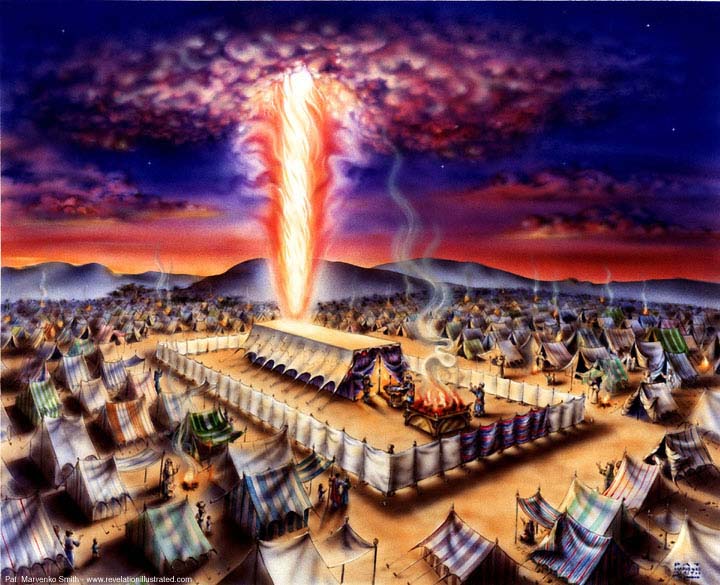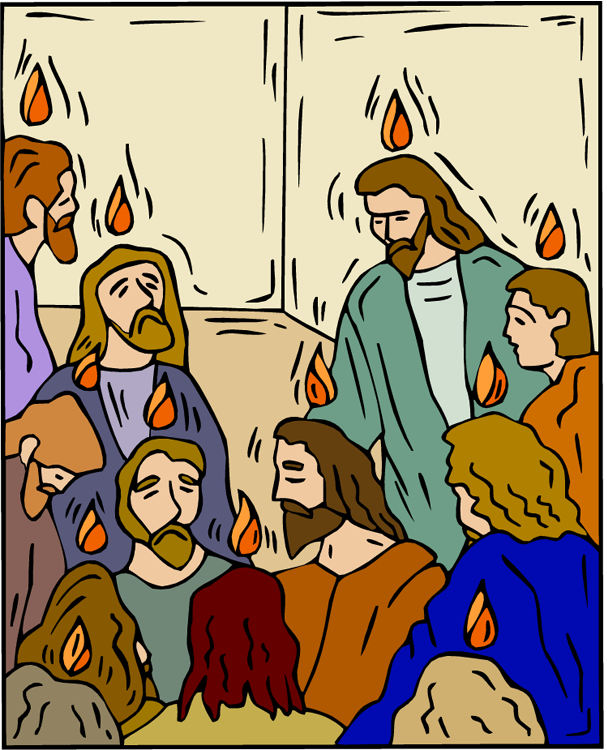By J. Nathan Lawrence
Hoshana Rabbah Biblical Resources
www.hoshanarabbah.org

Hearing the Voice of Elohim…Really?
In our modern, ultra-secular and hyper-rationalist society, the idea of believing in the God of the Bible, much less thinking that he communicates to people, or that people can hear him “speaking” is a totally foreign concept to most people including a majority of Christians. If you think you can hear from YHVH Elohim you are probably viewed as a member of radical fringe element if not an outright religious wing nuts! Yet the Bible from cover to cover records numerous accounts of YHVH “speaking” in numerous ways to his people over the millennia. Are these merely fanciful, fabulous legends that have been passed on down through the generations from dim antiquity? Should they be taken with a grain of salt as the modern readers snicker in amusement at the ignorant and superstitious ancient who actually believed these accounts? Or did the God of the Bible who is the same yesterday, today and forever actually speak to people then, and, more amazingly, does he still speak to people today? Do we take the Bible literally, or do we acquiesce to the atheistic and agnostic mindset of our current secular culture when it comes to hearing the voice of YHVH? Either the Bible is true and men are liars, or it is the other way around. Which is it? Is YHVH still speaking to people, and if so, can we still hear the voice of Elohim and if so how?
YHVH Wants to Commune With His People

Consider this. From the beginning of man’s time on earth starting in the Garden of Eden, Yehovah Elohim has longed to have a personal, communicative relationship with men.
And they heard the voice [Heb. kol] of YHVH Elohim walking in the garden in the cool [Heb. ruach] of the day: and Adam and his wife hid themselves from the presence [Heb. panyim] of the YHVH Elohim amongst the trees of the garden. And the YHVH Elohim called unto Adam, and said unto him, Where art thou? And he said, I heard thy voice in the garden, and I was afraid, because I was naked; and I hid myself. (Gen 3:8–10)
Despite what some religionists may tell us, the Bible reveals that YHVH is the same yesterday, today and forever, and that he does not change (Heb 13:8; Mal 3:6). He is still talking to humans. The issue is this: do we desire to hear him? Do we know how to hear him? If he is “talking” are we listening? We say that we believe the Bible, but do we really believe that we can hear YHVH?
The Tabernacle of Moses on Hearing YHVH’s Voice

Now let’s enjoy a little biblical history lesson. After giving the children of Israel his Torah-instructions in righteousness, the first thing that YHVH asked the children of Israel to do was to build a tabernacle. Why?
And let them make me a sanctuary; that I may dwell among them. (Exod 25:8)
Imagine that! The Creator of the universe wants to hang out with his people. Pause for a moment and consider this amazing thing. In the feebleness of our thinking, can we really understand this? What’s more, YHVH Elohim has never changed from then until now. After all, he made man in his own image, gave him his instructions in righteousness—a path that leads to a blessed life on earth with the possibility of eventual eternal life and inclusion in the actual, immortal family of Elohim. Then he sent his Son not only to redeem man from the curse of death because of sin, but then to show man the way to his and our Father in heaven. Then Yeshua the Son sent his Holy Spirit to guide us, empower us and to speak to us from within further enabling us to make this incredible journey upward to YHVH Elohim and his kingdom from heaven.

The tabernacle that YHVH commanded Moses and the Israelites to build reveals to humans an upward spiritual path toward the Creator from the physical to the spiritual level. It is literally a diagram from its outer courtyard, to the holy place and then to the holy of holies representing the body, soul and spirit of man as one draws closer and closer to Elohim. The closer one gets to the holy of holies, which represents the actual throne room of Elohim, the clearer and louder the voice of YHVH becomes. Consider this. Another name for the that most holy place within the Tabernacle of Moses was the d’veer—a Hebrew word meaning “oracle.” It was there under the glory cloud that Moses would hear the actual voice of Elohim and receive much of the Torah that we now have recorded in the Bible. One could not come into the d’veer except through the blood of a sacrificed animal, ritual cleansing, and by following specific physical and spiritual protocols pertaining to holiness and righteousness that had YHVH laid out. Once done, sweet incense representing prayer, praise and worship were offered before entering into the actual presence of the Creator. What can we learn from all of this? To commune and communicate with Elohim including hearing his voice, there are steps and protocols to follow. It is not that YHVH cannot speak to anyone anytime anywhere. But to commune with Elohim in a close, ongoing and a personal relationship certain things must be done and the relationship must be maintained, or humans will lose connection with YHVH. This is not unlike any close human relationship such as between a husband and wife, parents and children or close friends. Maintaining close relationships requires effort and purposeful intention.
You Can Hear the Voice of YHVH
Yeshua the Messiah, a Christian’s Lord and Savior, tells us that his disciples will be able to hear his voice.
To him the porter openeth; and the sheep hear his voice: and he calleth his own sheep by name, and leadeth them out. And when he putteth forth his own sheep, he goeth before them, and the sheep follow him: for they know his voice. And a stranger will they not follow, but will flee from him: for they know not the voice of strangers. …My sheep hear my voice, and I know them, and they follow me. (John 10:3–5, 27, emphasis added)
Throughout the Bible, there are many examples of YHVH’s servants hearing his voice. Here are a few examples from the Book of Acts alone of people hearing YHVH.

Then the Spirit said unto Philip, Go near, and join thyself to this chariot. (Acts 8:29)
While Peter thought on the vision, the Spirit said unto him, Behold, three men seek thee. (Acts 10:19)
And the Spirit bade me go with them, nothing doubting. Moreover these six brethren accompanied me, and we entered into the man’s house. (Acts 11:12)
And finding disciples, we tarried there seven days: who said to Paul through the Spirit, that he should not go up to Jerusalem. (Acts 21:4, emphasis added on all)
It’s All About Spiritual Activation

To enter into a relationship with YHVH Elohim, our Creator and Father in heaven, and to become his sons and daughters, we must be spiritually activated.
Man is comprised of spirit, soul and body (1 Thess 5:23). Before being spiritually regenerated or born again, our soul (our mind or intellect, will and emotions) controls what we think, say and do must learn to submit to the spirit of man. However, the typical soul dominated human overlooks the spirit part of man, yet the Bible has much to say about the importance of a person’s spirit as it relates to one’s relationship with YHVH.
Who knoweth the spirit of man that goeth upward, and the spirit of the beast that goeth downward to the earth? (Eccl 3:21)
The burden of the word of YHVH for Israel, saith YHVH, which stretcheth forth the heavens, and layeth the foundation of the earth, and formeth the spirit of man within him. (Zech 12:1)
The word of YHVH is clear that YHVH speaks to his children through their personal spirit.
But there is a spirit in man: and the inspiration of the Almighty giveth them understanding. (Job 32:8)
For what man knoweth the things of a man, save the spirit of man which is in him? even so the things of Elohim knoweth no man, but the Spirit of Elohim. (1 Cor 2:11)
Man cannot enter into a relationship with a YHVH, who is a Spirit, through his soul (i.e., his mind, will and emotions). This is because Elohim is a Spirit, and we must relate to him through his the Spirit.
But the natural man does not receive the things of the Spirit of Elohim, for they are foolishness to him; nor can he know them, because they are spiritually discerned. (1 Cor 2:14)
But the hour cometh, and now is, when the true worshippers shall worship the Father in spirit and in truth: for the Father seeketh such to worship him. Elohim is a Spirit: and they that worship him must worship him in spirit and in truth. (John 4:23–24)
For man to relate to Elohim, he must do so through his personal spirit or his innermost man. This means one’s spirit must be activated at the time of his new spiritual birth. When this For man to relate to Elohim, he must do so through his personal spirit or his innermost man. This means one’s spirit must be activated at the time of his new spiritual birth. When this occurs, a one receives in oneself the Spirit of Elohim, which then activates, instructs and controls one’s personal spirit, which in turn controls the soul (the mind,will and emotions), which in turn tells the body what to think, say and do.
When we are born again from above, our spirit man is activated by the Spirit of Elohim.
The spirit of a man is the lamp of YHVH, Searching all the inner depths of his heart. (Prov 20:27)
But there is a spirit in man, and the breath of the Almighty gives him understanding. (Job 32:8)
The Spirit Himself bears witness with our spirit that we are children of Elohim (Rom 8:16)
That He would grant you, according to the riches of His glory, to be strengthened with might through His Spirit in the inner man, that Messiah may dwell in your hearts through faith (Eph 3:16–17)
Now we have received, not the spirit of the world, but the Spirit who is from Elohim, that we might know the things that have been freely given to us by Elohim. These things we also speak, not in words which man’s wisdom teaches but which the Holy Spirit teaches, comparing spiritual things with spiritual. But the natural man does not receive the things of the Spirit of Elohim, for they are foolishness to him; nor can he know them, because they are spiritually discerned. (1 Cor 2:12–14)
But you have an anointing from the Holy One, and you know all things. …But the anointing which you have received from Him abides in you, and you do not need that anyone teach you; but as the same anointing teaches you concerning all things, and is true, and is not a lie, and just as it has taught you, you will abide in Him. (1 John 2:20, 27)
And every spirit that does not confess that Yeshua the Messiah has come in the flesh is not of Elohim. And this is the spirit of the Antichrist, which you have heard was coming, and is now already in the world. (1 John 4:3)
Steps to Take to Hear His Voice
Continue reading




















